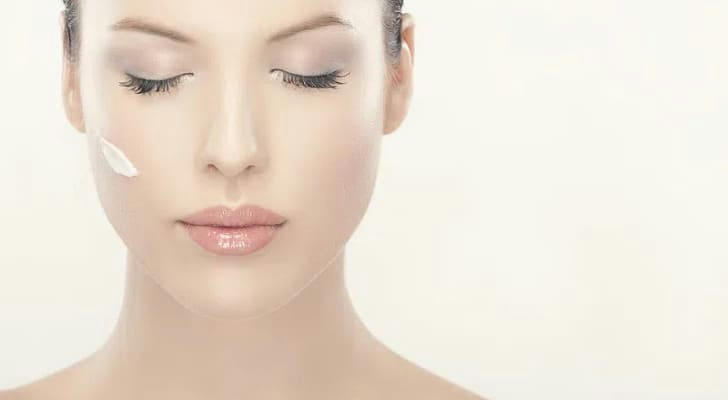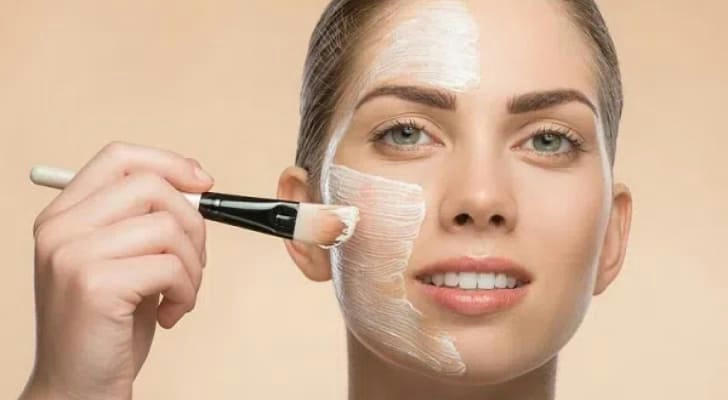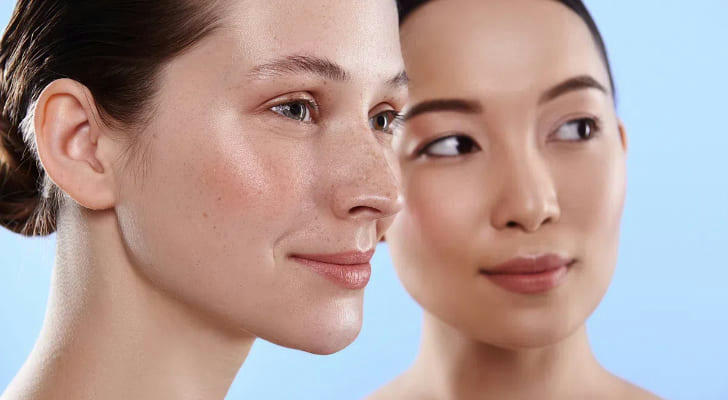Choosing the Perfect Base Makeup for Different Skin Types
Base makeup, as the name suggests, serves as the foundational layer for facial makeup. Covering a significant portion of the face, a clean, seamless, and flawless base sets the stage for enhancing the effectiveness of subsequent makeup layers. Thus, it not only marks the starting point of makeup but also forms the cornerstone of overall aesthetic appeal and harmony.
The Nexus Between Base Makeup and Varying Skin Types
Each skin type necessitates a tailored base makeup formula. For instance, oily skin requires a base that controls sebum and ensures long-lasting wear, whereas dry skin necessitates a hydrating and nourishing foundation. Recognizing that one-size-fits-all approaches are ineffective, selecting the appropriate base makeup tailored to your skin type is crucial for achieving a flawless finish.

I. Classification and Characteristics of Skin Types
1. Oily Skin
a. Characteristics
Oily skin is characterized by overactive sebaceous glands, resulting in an excess of oil on the skin surface, accompanied by enlarged pores and a propensity for acne breakouts.
b. Common Issues with Base Makeup
Some cars may have low mileage due to prolonged periods of inactivity. However, leaving a vehicle stationary for extended periods can lead to damages comparable to normal usage. These damages may include premature battery failure, tire deformation, deterioration of various fluids, oil seal aging and leakage, as well as chassis rusting.
Another scenario involves used cars with low mileage being offered at a lower price. In such cases, it's essential to consider whether the vehicle has been flooded, involved in accidents, or if there are issues with its documentation.
2. Dry Skin
a. Characteristics
Dry skin is marked by a deficiency of both oil and moisture, giving the skin a tight and dehydrated feel.Symptoms: Even Peeling Happens.
b. Common Makeup Base Issues
Dry skin lacks both oil and moisture, leading to the most frequent issues with makeup base: caking and flaking. Due to its dehydration, makeup products struggle to adhere perfectly to the skin. Coupled with fine lines and wrinkles, this results in an uneven, patchy appearance. Especially during autumn and winter, dry skin can experience more severe makeup fading.
3. Combination Skin
a. Characteristics
Combination skin combines the traits of both oily and dry skin, displaying regional differences across the face. Typically, the T-zone (forehead, nose, and chin) produces excess oil, while the cheeks remain relatively dry.
b. Common Makeup Base Issues
The oily T-zone in combination skin can cause makeup to slip and oxidize easily. Conversely, the dry cheeks may struggle with makeup application, resulting in caking and fine lines. This often leads to an uneven complexion.

4. Normal Skin
a. Characteristics
Normal skin maintains a healthy balance of oil and moisture, neither feeling greasy nor excessively dry. This equilibrium gives normal skin a healthy, radiant appearance.
b. Common Makeup Base Issues
While normal skin generally has a good balance of oil and water, incorrect product choice or application techniques can still lead to uneven color, caking, or makeup fading. However, compared to the other three skin types, normal skin tends to be more forgiving for achieving a flawless makeup base.
5. Acne-prone Skin
a. Characteristics
Acne-prone skin is often rough with a thicker stratum corneum, accompanied by excessive oil production, particularly on the face and scalp. It may also present with skin issues like pimples, pustules, and other acne-related conditions.These symptoms may crop up repeatedly.
b. Common Makeup Base Issues
Acne-prone skin often deals with visible blemishes and pimples. If your makeup base lacks proper coverage, these flaws might not be concealed effectively. Moreover, the rough texture of acne-prone skin can make it challenging for the makeup base to blend seamlessly, leading to cakiness, smudging, patchiness, and uneven skin tone. Picking the right makeup base for acne-prone skin is undoubtedly a tough call.
II.Principles for Choosing Makeup Base Based on Skin Types
1. Oily Skin
Opt for makeup bases with excellent oil-control properties, such as long-lasting foundations. Avoid overly hydrating or moisturizing products that might cause makeup to slip or leave a greasy sheen. Choose products with oil-absorbing capabilities to maintain a long-lasting, matte finish.
2. Dry Skin
Select makeup bases rich in hydration and moisturizing power, like moisturizing cushion BB creams, foundations, or creme foundations. Look for formulations containing emollients or oil-based ingredients for a long-lasting nourishing effect. Steer clear of overly light or oil-controlling products that might exacerbate dryness.
3. Combination Skin
Pick makeup bases tailored for combination skin, such as BB creams or foundations. Apply oil-controlling makeup base to the T-zone and set with loose powder. For the cheek areas, use moderately hydrating products to maintain a dewy look.
4. Normal Skin
Normal skin types are blessed with versatility. You can easily experiment with various makeup bases, including liquid foundations, BB creams, and CC creams. Choose your desired texture and shade based on personal preferences and makeup needs.
5. Acne-prone Skin
Acne-prone skin is relatively complex, requiring careful consideration when choosing base makeup. Opt for lightweight and breathable products, such as cushion BB creams or thin foundations, avoiding overly heavy or greasy options. Pre-makeup hydration is also crucial. Use refreshing and hydrating toners, lotions, or creams to provide ample moisture and nourishment to the skin, minimizing the likelihood of makeup caking. Avoid excessive concealing; stick to natural-toned products to prevent an unnatural look or additional stress on your skin. Moreover, regularly clean your makeup tools to prevent secondary contamination from bacteria and dirt buildup.

III. Base Makeup Application Techniques
1.Less is More: When applying foundation, apply in small amounts and layer gradually, tapping with your fingertips or sponge for a seamless finish. Avoid heavy application that can look cakey.
2.Zone Application: Divide your face into sections like forehead, nose, cheeks, and chin, and apply makeup individually to ensure even coverage in every area.
3.Attention to Detail: Use a small brush or sponge to precisely handle areas like the nostrils and corners of the eyes, ensuring no dead zones.
4.Setting Makeup: Apply loose powder or setting spray to extend your makeup's longevity and minimize fading.

IV. Conclusion
In summary, the connection between base makeup and various skin types lies in selecting products that cater to your skin's unique characteristics. Only by choosing the right base makeup can you achieve optimal results and ensure skin comfort.
